What Are the Coronavirus Risks with Ayahuasca Ceremonies?
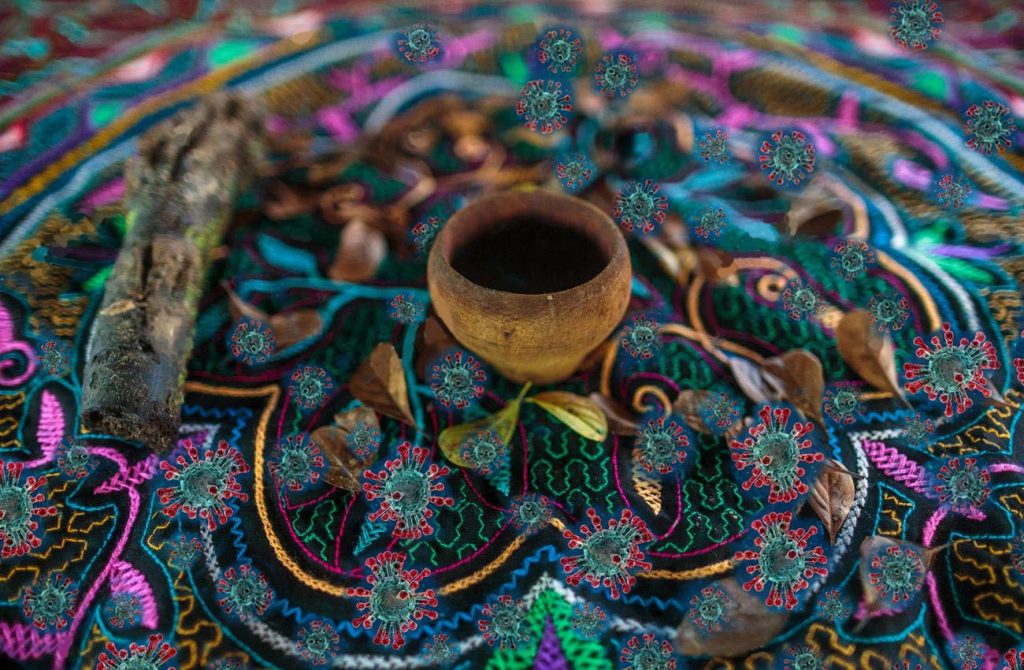
An Open Letter to the Ayahuasca Community on Harm Reduction During the Coronavirus Global Pandemic
As the world grapples with the novel coronavirus (SARS-COV-2 / COVID-19) pandemic, ayahuasca ceremonies could greatly facilitate transmission of a new virus that humanity has no immunity against. The virus so far has been devastating to elderly, immunocompromised and vulnerable people with common pre-existing conditions.
We urge the ayahuasca community, especially those who are plant medicine healers, ceremony leaders and retreat organizers, to recognize the gravity of the COVID-19 global pandemic and take responsible, harm reduction measures.
To reduce the risk of novel coronavirus transmission in the medicine community, we suggest that you:
- Consider cancelling ceremonies, retreats & conferences until infections drop and the public health crisis has passed
- Improve the overall hygiene of ceremonies especially around the use of shared objects that come into contact with bodily fluids as a professional best practice
- Share evidence-based information about COVID-19, including what people can do to stay safe and healthy
- Prioritize the safety of ceremony participants over defending a strongly held belief system that the plant medicines can cure anything and everything, even if you disagree with Western medicine and public health institutions
Furthermore, we urge the plant medicine community to refrain from:
- Minimizing the pandemic as fear-based media hype or just like a bad flu (and not a big deal)
- Spreading unsubstantiated conspiracy theories, as these create paranoia, fear, confusion or denial, which are unhelpful during a global public health crisis
While it’s critical that public health officials and governments contain the spread of the coronavirus, it’s equally important that we as members of the plant medicine community refrain from fear and panic, while doing our part to stay informed, safe, and prepared.
Overview
Given the ayahuasca community’s strongly held belief that ayahuasca itself is a miraculous healer and sentient plant teacher (and therefore disease transmission is impossible within the context of sacred ceremony)…
How might it be possible for the ayahuasca community (especially ceremony organizers) to take the global pandemic seriously, and elevate standards of hygiene, so that they can reduce the risk of coronavirus transmission and protect the safety of their participants?
In order to assess and address risks within the ayahuasca community, we’ve researched, compared and compiled known information about the coronavirus.
Sources include peer-reviewed scientific studies, governmental health agencies, universities, commercial mainstream media, independent media, community-funded media, nonprofit news agencies, and government-funded news agencies.
We also address key safety concerns around the administration of plant medicines, as well as the rampant misinformation circulating within the plant medicine community. Please click on any of these links to skip to the relevant section:
Part 1: Coronavirus Basics: What We Do & Do Not Know About COVID-19
- What We DON’T Know About COVID-19
- What We DO Know about COVID-19
- What Are the Symptoms of COVID-19?
- How is the Coronavirus Spread?
- How Does COVID-19 Compare with the Seasonal Flu?
- What Are the Risks of Contracting & Dying from COVID-19?
- The Good, the Bad & the Ugly of COVID-19
Part 2: What Are the Coronavirus Risks with Ayahuasca Ceremonies?
- Coronavirus Risk #1: Disease Transmission
- Coronavirus Risk #2: Prohibition
- Coronavirus Risk #3: Misinformation
Part 3: Impacts to the Ayahuasca Sector
Part 4: Ayahuasca Best Practices in the Post-Coronavirus Era
- We Have the Shared Responsibility to Buy the World Time
- Interested in What I’m Reading About Coronavirus?
- Recommended COVID-19 Coronavirus Resources
Where We Are Coming From
Before dismissing this article as “fear-based media”, please consider that there is a growing body of factual information about COVID-19, based on evidence-based research, genetic sequencing, and analysis of large data sets by the global scientific community.
We are fully aware we might be stepping into a minefield by talking about ayahuasca and the coronavirus pandemic.
We are very familiar with the triggers that can come up, ranging from conspiracy stories to paying attention to the “fear-based media”… not to mention all the strongly held beliefs that La Madre will protect you from all harm.
However, it’s not about you and what you believe.
It’s about prioritizing the safety and well-being of ceremony participants, as well as the greater plant medicine community and society as a whole, above defending your own belief system.
On Entheonation, we cover a fair share of mystical experiences and paranormal phenomena, as well as the latest scientific research on psychedelics. Sometimes (often) it feels like an awkward contradictory dichotomy to bridge the two worlds.
In the shamanism world, there is magic, spontaneous healing, interdimensional travel, and communication with entities, none of which can be validated by third-party witnesses or measuring tools that would hold up in the world of hard science.
In the psychedelic science world, there is data from double-blind, placebo-controlled clinical studies or peer-reviewed scholarly research papers, filled with charts, graphs and statistical analysis that, say, substantiate the hypothesis that yes, psilocybin mushrooms and ayahuasca can alleviate depression.
I’ll be the first to admit that I’ve experienced a universe of extra-sensory, paranormal phenomena and intuitive downloads through my exploration with visionary medicines. And I also have a great appreciation for science, evidence-based research, statistics and big data modelling.
And that brings me to two topics that I’ve long had genuine concern about, and how coronavirus impacts them both:
- Shamanic circles and hygiene (in the age of increasing global connection and rising pandemics)
- The prevalence of conspiracy theories in neo-shamanic circles
But first, let’s start with some coronavirus basics.
Part 1: Coronavirus Basics: What We Do & Do Not Know About COVID-19
Severe acute respiratory syndrome coronavirus 2 (SARS-CoV-2) is a virus that was first identified in Wuhan, China. Infection with SARS-CoV-2 causes the coronavirus disease, called COVID-19. Because it is a new (novel) coronavirus, there is a lot we do not know about it.
Please be aware that the statistics indicated might change over time. These estimates can vary depending on the size of data population, testing methods, data model and other factors. Over time and with more data, we will have a more accurate understanding of COVID-19.
What We DON’T Know About COVID-19
- We do not know exactly how the virus originated, though genetic sequencing strongly suggests the virus is of zoonotic origin.
- We do not know if COVID-19 is seasonal, because there is no historical data.
- We do not know if COVID-19 will go away with warm weather like a seasonal flu. It might also cycle between the Northern & Southern hemispheres, depending the season. We just don’t know.
- We do not know if hot, tropical climates reduce the transmission of the coronavirus. A new study suggests that the spread has been mostly occurring in the East-West band of the globe with cooler temperatures and moderate humidity, however, the study has not yet been peer-reviewed.
What We DO Know about COVID-19
- There is currently no vaccine or treatment protocol for COVID-19. Drug manufacturers indicate that a vaccine will take at least one year to develop.
- Humans have no immunity against this virus because it is new.
- It has a long incubation period of 2-14 days, during which the disease can be transmitted to others.
- It is highly contagious in humans and spreads exponentially, due to asymptomatic transmission. In other words a person can be contagious, while not experiencing any symptoms.
- It can cause severe respiratory failure for the elderly, as well as people with underlying conditions.
- Hospitals have been overwhelmed by the influx of patients requiring respiratory support.
- Most people who are infected experience mild to no symptoms.
- Most people recover from COVID-19 on their own, without the need for treatment.
What Are the Symptoms of COVID-19?
- The novel coronavirus attacks the lungs and can cause respiratory failure.
- Symptoms of COVID-19 include fever, dry cough, fatigue, difficulty breathing, and diarrhea.
- In severe and critical cases COVID-19 can cause pneumonia, heart failure, organ failure, and death.
How is the Coronavirus Spread?
- Like the flu, the coronavirus is airborne. Transmission occurs through airborne droplets from sneezing or coughing, through bodily fluids, and via contaminated surfaces (upon which the virus can survive for three to nine days).
- Transmission can occur asymptomatically; people can be infectious before they show symptoms, and for several weeks afterwards.
- An infected person may infect 2-3 other people on average.
- Genetic analysis on patients in Seattle suggest that infections are doubling every 6 days in Washington. Academics at the University of Hong Kong estimate that the infection doubles every 6.4 days.
How Does COVID-19 Compare with the Seasonal Flu?
- An infected person can infect 2-3 other people on average. A preliminary study suggests that the coronavirus has an estimated infection rate of 2-3 people per infected person, which is double the infection rate of the seasonal
flu (around 1.3).
- The case fatality rate (CFR) is estimated to be 10x higher than the seasonal flu on average, but considerably higher than the flu, depending on the age group.
- The COVID-19 caseload is estimated to be 10x a bad flu season. Hospitals in impacted areas across the world are being rapidly overwhelmed; medical personnel are exhausted and emergency rooms in Italy are collapsing.
- COVID-19 threatens to overwhelm hospitals worldwide. With most hospitals operating at 90-100% capacity during flu season, there simply aren’t enough beds, ventilators or intubation machines.
What Are the Risks of Contracting & Dying from COVID-19?
- The infection rate (R0) is estimated to be between 2 and 3, which represents the average number of people to which a single infected person will transmit the virus.
- Infections are doubling every 6 days. Bear in mind, this number increases with more testing.
- It’s highly likely we will all get it at some point. Experts on disease modeling project that 60-70% of the human population will be infected in 1-2 years.
In his interview with Joe Rogan, Michael Osterholm, an internationally recognized expert in infectious disease epidemiology, estimates that this could require 48 million hospitalizations, 96 million cases, and more than 480,000 deaths over the next 3–7 months.
You can project the increase in total infections and fatalities over time for their country yourself by copying this Google spreadsheet created by Idahosa Ness.
- The vast majority of us will recover. The average case fatality rate (CFR) ranges from 1% – 3.4% depending on the population of confirmed infections included in the calculation.
If testing is low, then the population of confirmed infections is lower, which results in a higher CFR, because those tested are people requiring medical support, as seen with the US CFR of 5.9%.
If testing is high, and includes more of the general population CFR skews lower. South Korea, a country that implemented drive-through checkpoints that hundreds of thousands of people, estimates a 0.6% CFR. Some experts believe this may be a more accurate upper bound.
The quality of medical services and speed at which an individual can access these services will impact the CFR.
- The average CFR increases by age group, rising to 10-15% for people over 75. Death rates vary depending on factors such as age, health, and sex.
- However, COVID-19 is not a disease of the elderly; people of all ages with 6 common underlying health conditions (including cardiovascular disease, high blood pressure, and asthma) are also vulnerable.
The Good, the Bad & the Ugly of COVID-19
- The good news – 80% of the cases are mild. Furthermore, 45% of the infected will experience only minor symptoms and recover on their own with no need for any treatment.
- The bad news – most of us will get it. Furthermore, an effective vaccine or antiviral drug is unlikely to be available soon (1-5 year estimate). So, unless people choose social distancing, asymptomatic or moderately sick people can continue to spread the virus without knowing, which endangers vulnerable populations, especially in countries with weak health care systems.
- The ugly news – many people will die and experience financial hardship. More doctors and medical professionals on the frontline of the epidemic will get infected and die. Unless the pandemic is contained, hospitals around the world, especially in countries with weak medical system, will collapse. In an effort to address the escalating public health emergency, more countries will implement travel restrictions, border closures, and lockdowns. With the worldwide disruption of supply chains, the global economy risks being dragged into a global recession. More contract and gig economy workers will experience financial insecurity. More people in the US will accumulate medical debt and be pushed towards medical bankruptcy.
COVID-19 World Stats Updated March 13, 2020
While the thought of being part of the healthy demographic that will be minimally impacted might be a relief, please do consider that those who will experience hardship are those in our beloved community who are elderly, vulnerable and immunocompromised, as well as those who need access to medical services that they can’t get because hospitals are overwhelmed.
Part 2: What Are the Coronavirus Risks with Ayahuasca Ceremonies?
We urge the ayahuasca community to recognize the gravity of the COVID-19 global pandemic.
There is no human immunity for the novel coronavirus, or a vaccination or treatment protocol. 10% of those infected require respiratory support in order to survive, and hospitals do not have enough beds or respiratory equipment to address the crisis.
It is a global public health crisis of enormous magnitude. I urge plant medicine communities to take into account how plant medicine ceremonies contain numerous vectors of transmission.
Coronavirus Risk #1 in the Ayahuasca Community: Disease Transmission
Ceremony assistants could be the most at risk, since they handle buckets and tissues filled with vomit, as well as other bodily excretions, and are ultimately responsible for cleaning the bathrooms.
Participants are also at risk from multiple means of coming into contact with bodily fluids, perhaps without realizing.
Here are some of the most concerning areas of ceremony-related transmission:
- The use of shared objects to administer plant medicine such as cups and nasal blowpipes. In plant medicine ceremonies, participants often drink from shared cups (or a single cup).
Spoons to administer tobacco juice into the nose are also shared. Peyote chocolate and San Pedro chocolate may be distributed to a large congregation of up to 100 people, using just one spoon.
Blowpipes through which shamans administer rapé (also called hapeh, rapeh) tobacco snuff by blowing it forcefully into the recipient’s nasal passages, are inserted into the nostrils of multiple people in one night.
These blowpipes are rarely ever cleaned at all, let alone disinfected.
Furthermore, if a shaman is contagious (and they could be without even knowing they are ill), they could be infecting the entire congregation.
- Transmission via airborne droplets through purging. While it’s currently unknown if coronavirus is transmitted via vomit, mucus and sputum is often coughed up in the process of purging, putting adjacent participants and assistants at risk.
- Contact through surfaces & tissues contaminated with feces and bodily fluids. Investigators found virus particles on the toilet bowl, sink, and bathroom door handle of an isolation room housing a patient with the novel coronavirus who tested positive for the virus.
Ceremony bathrooms receive heavy use and ceremony participants who are in an altered psychedelic state are less likely to be cognizant of personal hygiene and minimizing contamination of public areas.
Moist tissues left in buckets or on the floor can also spread the pathogens, especially when picked up with bare fingers.
A Personal Story: Being Vigilant About Avoiding Infection & Inept Medical Systems
I would get odd, puzzled looks. Sometimes even the stink eye.
Lorna (a.k.a. the uptight Gringa) actually brought her own cup to ayahuasca ceremony.
I knew it was not very community-oriented and somewhat of a ceremonial faux pas, but I really didn’t want to be the 20th person in line to drink ayahuasca from a single cup covered with sticky residue that was getting filled over and over again, without even a wipe down.
I was also the one person who would regularly clean my rapé applicators with alcohol or the flame of my lighter, especially if it got shared around.
Nobody else did this, but I had enough of picking up diseases from sharing stuff in Brazil, and then having to navigate the crappy, crappy hospital services in Rio Branco.
You see, during my first trip to the Brazilian Amazon, I picked up scabies because I slept in a child’s bed with bed sheets that hadn’t been cleaned. And not knowing I had something different, albeit a lot more itchy, than the ubiquitous insect bites I was accruing daily, I went about my journey for a number of weeks spreading it everywhere, before an anthropologist pointed out what I had.
In my attempt to get proper treatment I went to three hospitals and clinics, was incorrectly diagnosed by incompetent medical professionals and given remedies that I knew would be useless.
I was prescribed Vagisil vaginal cream used for yeast infections, which I was told to smear all over my body. As expected, that did nothing.
Another attempt got me a noxious chemical to pour all over my body, that caused such a burning, fainting reaction that required a stranger to help me into the shower to rinse off.
Needless to say, in Acre, Brazil, I got really vigilant about avoiding infection and avoiding inept medical systems. Both of which are important strategies to adopt when navigating a world that’s experiencing a coronavirus pandemic and countries with broken health care systems.
Coronavirus Risk #2 in the Ayahuasca Community: Rollback of 20 Years of Progress in Legal Advocacy
Do you really want to risk the possibility of your plant medicine ceremony or retreat becoming the super-spreader event that triggers a global ban on ayahuasca?
Look, here’s the deal. Anyone who falls sick from coronavirus is questioned on their activities of the previous weeks:
- Where did you go?
- Who were you with?
- What did you do?
This helps disease forensics specialists identify who else might be infected.
This also means the secret plant medicine ceremony will no longer be a secret.
And if many people in the ceremony were infected because of the ceremony, then there’s a lot of negative media spotlight on the shamanic ceremony being a “superspreading event.”
Superspreading events, where multiple people at a gathering spread their infection, can trigger widespread outbreaks.
If an entire group of 40 people were infected with coronavirus after attending an ayahuasca ceremony, that would be just cause for governments to do a blanket ban on this kind of activity. This would be a tremendous setback on all the legal advocacy work that has been accomplished over the last 20 years.
We’ve previously seen that even a single death at an ayahuasca ceremony can cause country-wide prohibition of ceremonies. Imagine the impact of an entire ceremony becoming infected and spreading the virus to countless people across the world.
Governments have already been justified in taking such drastic steps as completely shutting down air travel, and quarantining their entire population, in order to contain the virus. So a total ban on plant medicine ceremonies, as a protective measure of national security, would not be a far stretch.
That kind of emergency, last-minute legislation could set back ayahuasca freedoms by decades.
It could undo all the hard work that legal advocates and human rights campaigners have dedicated to make ayahuasca available to more people. We can’t really anticipate how long it might take to reverse any kind of blanket ban legislation.
So it is unquestionably a lot safer to just take a break from running ceremonies until the pandemic has been downgraded. Otherwise, you may risk becoming the ceremony that reverses the movement to decriminalize psychedelics.
Coronavirus Risk #3 in the Ayahuasca Community: Conspiracy Theories & the Spread of Misinformation
This is probably the most serious risk: falling prey to and spreading misinformation, which is spreading faster than the virus itself.
Why?
Because it creates fear, paranoia, confusion, complacency, denial and willful ignorance.
Quite frankly, I’ve been astounded by the level of conspiracy theory peddling by prominent members of the medicine community, and calls to action for people to engage in willful ignorance by considering public health and safety information communicated through established news channels to be fake.
While there is no need to engage in panic or hysteria, willful ignorance and misinformation is dangerous during a global public health crisis.
Having spent a fair amount of time in global medicine culture, I’ve noticed that many psychedelic facilitators and ceremony leaders truly believe in debunked conspiracy theories.
It doesn’t surprise me; the conviction that comes from the intrinsic realness of an intuitive download that occurs in a visionary state of consciousness can be powerful.
Couple this with an overarching distrust in allopathic medicine, which is often why they are administering plant medicines in the first place, and erroneous beliefs become more deeply rooted.
Furthermore, I have heard ceremony participants repeating something their shaman said in a manner not dissimilar from members of a religious cult quoting their guru.
Having blind faith in your shaman is not only giving up your own power and agency, it’s also a slippery slope if a Western facilitator is administering psychedelics and then imparting misinformation to a highly suggestible captive audience.
For this reason, I hope to encourage ceremony leaders to be mindful of spreading coronavirus conspiracy theories and misinformation.
Here are some commonly believed, unproven theories and misinformed statements I’ve seen circulating in the global medicine community. As practitioners of plant medicine healing, we have a shared responsibility to stop them.
Stop Comparing Coronavirus to the Seasonal Flu
This is irresponsible and misinformed. Within the range of all current estimates, coronavirus is deadlier than the seasonal flu. It is roughly twice as infectious, 10 times more fatal, and results in a 10x heavier disease burden on hospitals than a severe flu season.
Even with the most optimistic CFR of 0.6% (South Korea), the coronavirus is still 6x more severe than seasonal flu.
There may be a time we can look back on this episode, from the perspective of greater built up human immunity (as well as more accurate data) and say that “The COVID-19 pandemic was overblown.”
Now is not the time.
Stop Minimizing COVID-19 as a “Disease of the Elderly”
These elders are our parents, grandparents, relatives and beloved community mentors. And it’s not just the elderly, people of all ages requiring respiratory support in order to live are being admitted to hospitals around the world.
“Those of all ages with heart disease, diabetes, and lung diseases are all more susceptible to the virus, according to early data out of China – regardless of age,” says Dr. Lynn Marie Morski, MD, Esq. – physician and host of the Plant Medicine Podcast.
Stop Claiming that COVID-19 is a Hoax
It’s not a hoax. The media coverage you see documenting empty highways, airports, mega cities, hospitals, sick people, dead people, medical professionals in hazmat suits, and mass graves visible from outer space does not all come out of an elaborate movie set.
- There is far too much international press coverage, and far too many testimonies, videos, photos, and eye witness accounts streaming in from all over the world, from countries (with governments that hate each other) for it to all be one coordinated disinformation campaign.
- There’s far too much money being wiped off stock markets, with massive economic losses crippling entire industries and hurting businesses large and small for it to be a simulation.
- This a real global public health crisis. Infectious disease specialists have been warning us about the risk of a devastating global pandemic for at least a decade. It should not be a surprise that it’s happening now. It’s amazing that it didn’t happen sooner.
However, with the rate of spread, eventually you will know someone who is infected, or who may have died. While it may not feel real now, it may be real for you later.
Stop Sharing Racist Memes & Social Media Posts
This incites racial targeting and violence against Asians of all nationalities.
Since the outbreak of the virus, racism against Asian people has been rampant. Commentators calling the coronavirus the “Wuhan virus” or the “Chinese coronavirus” needlessly stokes racial tensions. Attacks against Asian people are on the rise, and recently a Singaporean man was brutally beaten in London and told “We don’t want your coronavirus in our country.”
Sharing of racist memes (even you think they are meant to be funny and no big deal) and talking points not only spreads misinformation about plant medicines, but also plays into racist stereotypes and ignores the reality of Asian people facing increased risk of violence in the streets.
Stop Claiming that COVID-19 Is A Fear-Based Tactic Unleashed By the Corporate Media with the Sole Purpose of Enriching Vaccine Companies
COVID-19 is a real, global pandemic and serious public health concern. It’s not the first and it won’t be the last.
Unsurprisingly, in the world of escalating disinformation campaigns, conspiracy theories abound and often take root in “alternative” communities who prefer to live outside the matrix, such as the plant medicine community.
Implicit in this claim is a call to action to:
- Engage in willful ignorance by dismissing important public health information being communicated through news channels
- Distrust factual information published via established organizations in favor of unsubstantiated claims published by “alternative media”
We urge you to exercise discernment and critical thinking.
Let’s take a stroll through the logic tree, shall we?
- Any pharmaceutical company that develops an effective vaccine for COVID-19 stands to make a lot of money, but what company this might be is a big unknown.
- Drug development companies themselves estimate that a working vaccine is at least one year away and a safe vaccine might be 5 years away. There is still no vaccine for Zika.
- Drug development companies must first invest massive resources in the research and development of this vaccine, producing and testing a multitude of drugs, until they find one that is safe and effective.
- Many drugs that pharmaceutical companies develop are not viable and thus never make it to market, even after significant investment in research and development.
Therefore, the theory that the coronavirus was genetically engineered and then released for the sole purpose of enriching one specific (but yet unknown) company that must invest huge sums towards a crapshoot endeavor, for which there is no guarantee of success, is ludicrous.
Think about it.
Stop Creating Fear, Anxiety & Confusion that Coronavirus is a BioWeapon, Genetically Engineered or the Result of the Global 5G Rollout
Just stop rumor-mongering at all.
- There is no evidence that the coronavirus was made in a lab, or purposefully or accidentally released.
- There is no evidence that lab animals were later sold in the Wuhan Seafood market by profiteering lab assistants.
- There is no evidence that the coronavirus was created by the CIA or Bill Gates.
- There is no evidence that COVID-19 symptoms are created by 5G technology, with the goal of mass vaccinating the world.
Anyone with a decent camera and editing software can put together a talking video with media clips and screen grabs and claim anything.
Anyone can make an unsubstantiated speculation on Facebook, and share a tangentially related article as “evidence”.
Anyone can start a blog, and create content about anything.
Why would you believe a YouTuber, Facebook stranger, over epidemiologists and public health experts?
Rumor-mongering is an utter waste of time during a global pandemic (because you will never truly know, now, will you?).
It also increases the risk to public safety, because you encourage others to ignore public health advisories from established channels and qualified experts.
Coronaviruses are common in animals, several have made the leap into humans, such as SARS (civet cats) and MERS (camels). A novel coronavirus global pandemic has actually been anticipated by epidemiologists for some time.
According to infectious disease expert Michael Osterholm says: “This thing clearly jumped from an animal species, probably in the third week of November, to humans. We could not have crafted a virus like this to do what it’s doing – we don’t have the creative imagination or the skillset. Mother Nature does it so much better than we could do it.”
Genetic analyses, reported on by the WHO, show that the virus came from bats, and has not been bio-engineered.
An open letter from a group of 27 scientists from eight countries condemns this kind of rumor-mongering, stating that they do “nothing but create fear, rumours, and prejudice that jeopardise our global collaboration in the fight against this virus.”
Stop Claiming that Ayahuasca Will Protect You from Disease
People, even shamans, drink ayahuasca and still die from cancer, as well as other life-threatening diseases.
While ayahuasca has remarkable psychospiritual and emotional healing benefits, not enough is known about the plant medicine’s ability to cure specific diseases.
There is no evidence ayahuasca can cure COVID-19.
It is also important not to get confused about ayahuasca’s antiviral and antimicrobial properties. Although some of the molecules in ayahuasca have been shown to have some very limited antiviral and antimicrobial properties in laboratory conditions, we don’t yet know how this translates into humans. It is highly unlikely that ayahuasca would be able to kill the coronavirus on a contaminated cup or surface, or boost your immune system enough to fight off an infection.
Part 3: Impacts to the Global Economy & the Ayahuasca Sector
The outbreak has rapidly evolved into a global pandemic that is causing governments to implement drastic containment measures, such as quarantining entire cities of tens of millions of people, and putting their countries into lockdown, closing borders and banning entry.
Furthermore, the implementation of large-scale quarantines, movement restrictions, travel and event cancellations have cost entire industries and countries trillions of dollars in economic losses.
This combined with the resulting stock market crash and concurrent oil war between Saudi Arabia and Russia threatens to pull the world into a severe global recession – which affects all of us.
For those who participate in and derive livelihoods from plant medicine healing:
- Quarantines, travel bans and restrictions, as well as the voluntary choice to avoid unnecessary travel will contract the ayahuasca industry, especially retreat businesses.
- Responsible organizers are cancelling events, ceremonies, and retreatsas a precautionary measure.
Plant Medicine & Psychedelic Event Cancellations and Postponements
Ceremony leaders all over the world are now facing the difficult decision of whether to cancel or postpone their upcoming events.
Elio Geusa, founder of AYA Healing Retreats in Peru, who is from Italy, a country under lockdown, was in full plant medicine retreat as travel bans started being issued around the world. He shared with me some of the pressing concerns and decisions he was faced with as guests started arriving from around the world.
“We have already started cleaning surfaces with disinfectant, reducing instances of physical proximity, and ceasing services such as our saunas.
We’ve had a lot of concern from the families of our current retreat guests about travel, and some have left early. Now we are considering postponing some future retreats until the situation changes.
There are many risks of spreading the virus, and infecting local Shipibos who already have health issues and problems with the local hospitals. The hospitals in Iquitos are already overwhelmed by a dengue fever outbreak.”
Ceremony organizers will have to decide whether the risk of transmission to locals, to their employees, and to the retreat participants and their wider connections, is worth the benefits of continuing the ceremonies.
Peter, a Zen Hospice practitioner and plant medicine retreat participant from NYC, gives us this frank advice:
“Money is the only motive not to cancel. If retreats were free they’d all be cancelled already.”
Here are just some of the major events and retreats that have postponed or cancelled as an early measure to slow the spread of coronavirus:
- The 15th International Amazonian Shamanism Conference, Iquitos, Peru
- Pawa in San Francisco, California
- Philosophy of Psychedelics Conference, Exeter, UK
- The Ayahuasca Gender and Sexual Diversity Retreat, Peru
- Meet Delic, Los Angeles, California
Part 4: Ayahuasca Best Practices in the Post-Coronavirus Era
Now, it would be rather dystopian to attend an ayahuasca ceremony where ceremony assistants wear surgical scrubs and rubber gloves, and the shaman wears a surgical mask underneath his feather headdress.
But there’s a lot of room for improvement for hygiene in ayahuasca ceremonies – and I’m sure many people will agree with me – ayahuasca’s miraculous healing benefits aside.
Recommended Best Practices for Ayahuasca Providers
Ayahuasca Ceremony Leaders – Can We Have an Honest Conversation about Hygiene?
Adopting coronavirus precautions will be new and unusual in ayahuasca culture, but times have changed.
“I don’t believe that there is any way to make a ceremony anything but a huge disease vector.
One asymptomatic carrier in the room would fill the entire space with viruses via breath, vomit, coughing, sneezing… All quite common in ceremonies for healthy people.”– Richard Grossman, LAc, OMD, PhD.
Here are some suggestions for ceremony providers to consider adopting in a post-coronavirus world:
1. Consider cancelling ceremonies and retreats. A few ceremony facilitators I’ve spoken to have opted to suspend ceremonies until the outbreak is contained.
Given that there is no COVID-19 treatment protocol or coronavirus vaccine, they felt it was better to err on the side of caution over risking the group infection of ceremony participants and contributing to the global spread of the virus.
From a public health perspective, preventative measures like cancelling large gatherings have the best chance of “flattening the curve,” so that infections can slow down and hospitals can handle the influx of patients requiring extensive care.
2. Screen participants prior to ceremony, including ceremony assistants. This might look like asking where the participant may have travelled to prior to arriving to the ceremony or retreat, or if they’ve had symptoms of fever or a cold in the last week.
It may also involve taking the person’s temperature prior to ceremony. While the seemingly invasive nature of this gesture might make it awkward for many providers to implement for many providers, understand that times have changed.
And yet all this may still not be enough. These precautions will not identify infected people who are asymptomatic.
Asymptomatic disease transmission is a known risk.
3. Wash the cups with a disinfectant solution, or preferably use disposable cups. While the ayahuasca itself might have some antimicrobial properties, there’s no reason to think it could kill viruses.
If the rim of the serving cup has met with the mouths of multiple people, the cup would likely spread germs. Wiping the rim down with the same cloth that is used to wipe the rims of multiple cups, is also likely to spread germs.
The safest idea is probably to use disposable cups, or multiple cups that are thoroughly disinfected between ceremonies.
If facilitators insist on re-using cups during a ceremony, I would recommend dunking the cups in an alcohol solution (70% or higher), and to have an assistant charged with bringing out fresh cups and taking away used ones to be disinfected so as to have earthly hygiene concerns not detract from the sacredness of the experience.
Keep in mind that alcohol solutions take a few minutes to work, and that drying the cups with a cloth may also carry the virus between cups.
4. Consider refraining from administering soplar to bowls, bottles or cups. Blowing smoke into containers could potentially pass infections on to the participants. Remember that a shaman may not be showing symptoms but could still be infectious.
5. Refresh buckets with greater frequency. Make sure that people get their own bucket and that if they need a replacement, a fresh disinfected bucket is provided.
Check on participants’ buckets with greater frequency and if it is full, replace it with a disinfected bucket right away. That means you will be checking on buckets and disinfecting them a lot more throughout the night then you might normally do.
I’ve been in so many ceremonies where there isn’t a fresh bucket in sight and I as a participant have had to go wash one out someone else’s vomit in order to have a clean bucket purge into.
Or worse, there aren’t enough buckets for the participants and people have to share used buckets.
Now I’m someone who has relatively good faculty in altered states, but I can say that a lot of people do not; especially newcomers. It’s pretty awful to purge into a bucket full of vomit that isn’t yours.
Please change them.
6. Disinfect the floor and other surfaces. In South America, buckets are not often used in ceremonies, especially in a venue where people are expected to purge outside. Indeed, why deal with buckets when you can purge in Nature?
When I was visiting churches in Acre, Brazil some 16 years ago, I was surprised to see people simply turn their heads and purge directly onto the floor in front of them. Though there were no buckets, there was a “fiscal” charged with cleaning up vomit between the chairs and in the aisles as part of their service.
I can’t say whether vomiting on the floor is still a practice in Acrean churches, or whether standards have improved (I would hope so). I expect that churches in developed countries will reflect 1st world standards. I will say that Santo Daime and other ayahuasca churches tend to have higher standards of hygiene than shamanic or indigenous ceremonies, as they are more organized in general.
In the post-coronavirus era it may be good to clean the floor and other affected surfaces with a mop that has a disinfectant solution.
The ubiquitous home cleaner in Latin America is 99% alcohol solution. Bear in mind that wiping surfaces with alcohol solutions may not be enough – alcohol requires a few minutes to kill viruses, and may evaporate before it has had time to work.
7. Definitely use disposable rubber gloves, if you are handling buckets of vomit and soiled tissues.
8. Put hand sanitizer in every bathroom, as well as other obvious places. Remember that hand sanitizers are not always 100% effective, especially if used on wet hands. Also, change towels frequently – they can harbor viruses for days.
9. Clean the bathrooms regularly, with disinfectant. During the course of the ceremony, the bathrooms will see heavy use, and therefore require more disinfecting.
People might vomit in the bathroom, so make sure there’s a bucket next to the toilet, and be sure to replace it with a fresh disinfected bucket if it is soiled. That way, nobody is purging into a full bucket and spreading droplets all over the bathroom.
People might also purge in the sink, so make sure all surfaces get a good disinfecting wipe down.
10. Pick up soiled tissues using disposable rubber gloves or by picking them up using a paper towel. Tell participants to avoid reusing tissues or toilet paper.
11. Consider offering protective tips for recipients of shamanic snuff. In the world of hookah smoking, people smoke from a shared mouth tip. Disposable plastic tips can be purchased or are offered by hookah lounges for increased personal hygiene. These tips can be adapted for rapé snuffing.
Yes, I know this is a weird idea I came up with on my own. Even though tobacco itself has compelling antimicrobial properties, think about all the noses that blowpipe tip got inserted into.
And I assure you many shamans rarely if ever clean their blowpipes. So if you are a germaphobe like me, be a weirdo and use a disposable hookah tip.
However, the safest method of consuming tobacco snuff is to self-administer the rapé instead.
12. Ventilate the space, by opening doors and windows in addition to fans. According to the WHO, natural ventilation is best as it increases airflow and exchange and can reduce risk of infection by microorganisms (like viruses).
13. Wash your hands often, tell participants to wash their hands, and use alcohol-based hand sanitizer frequently. For retreats in remote areas, consider setting up a Tippy Tap – a simple system that reduces water use and disease transmission.
Infected in Peru By the Plant Medicine Healer Herself
Here’s an anecdote on the importance of hand washing in plant medicine ceremonies from public health practitioner Dee Adams (MSPH), who has postponed her Gender and Sexual Diversity Ayahuasca Retreat due to the coronavirus pandemic:
“I contracted pink eye on a retreat in Peru in 2017, after an outbreak in the nearby town. Towards the end of the retreat, the curandera (healer), an older Shipibo woman, went to the town to run an errand.
When she returned, she prepared a plant bath that was the source of the infection for other participants. The use of sananga furthered the spread because pink eye can “jump” to an eye dropper (eye medicines should never be shared).
The infection had spread to the rest of the participants by the end of the retreat, resulting in swollen, painful eyes. We were able to treat it once we left and went to the town pharmacy and by our own individual medicine.
This all could have been avoided if the curandera had washed her hands frequently, especially in preparing treatments that all the participants take part in.”
What Ayahuasca Ceremony Participants Can Do
Vigilance and maintaining best practices can be difficult if you are in an altered state of “all-is-oneness.” Here are some suggestions to minimize contamination from other people during ceremony:
1. Bring your own cup! Ask the facilitator or shaman to measure out medicine & pour it into your own cup, or to measure out the medicine directly in your own cup and bypass the shared cup. Beware: if a shaman is serving the medicine with their own cup, it could still pass a virus into your clean cup!
2. Don’t purge into a used bucket, even if it’s filled with soggy tissues that will reduce the splashback factor. Try to get the attention of a helper to find you a new, clean bucket – that’s their job.
3. Use a personal rapé self applicator to administer shamanic snuff.
4. Wash your hands frequently especially if you’re going in and out of the bathroom. Try to avoid touching doorknobs and toilet handles with bare hands.
Remember that people who are in altered states of consciousness are less capable of fastidious cleanliness around their own bodily fluids.
5. Ask the facilitator what they are doing to reduce risk. You are empowered to ask about the safety of the ceremony, and even to make suggestions. If you don’t feel comfortable or heard, don’t stay!
6. Don’t go! Remember, this is the safest and probably the most responsible option; at least for the time being, until the coronavirus becomes a less severe risk.
As Peter from the Zen Hospice says:
“I think it’s very cut and dry. Don’t go. I don’t think that anyone should be participating in group plant medicine ceremonies, especially in the next four weeks.”
Part 5: Final Thoughts
We Have the Shared Responsibility to Buy the World Time
As members of the plant medicine community we have a shared responsibility to shield our most vulnerable from harm, and try to buy the world some time. What time are we buying?
- We are buying time for humanity to build up immunity to the novel coronavirus.
- We are buying time to slow down the wave of the infected that are overwhelming medical services around the world.
- We are buying time for government and public health officials to implement containment measures so that the infection rate can reach its peak and decline.
- We are buying time to prepare ourselves to face likely pandemics in future.
Interested in What I’m Reading About Coronavirus?
Many have questioned where I get my information, and how I am able to recognize disinformation.
My perspective comes from having spent a great deal of time studying global crises and geopolitics at one of the top universities in the world for international affairs, so I tend to follow global issues such as wars, pandemics, and economic shocks, with great interest.
While I’m not a specialist in Internet forensics, I am a professional Internet marketer. In my career, I’ve learned how to spot the footprint of online disinformation campaigns, because they rely on the same tactics that internet spammers use.
Mass press release submission, automated fake social media profiles that retweet and repost links, and the creation of a web of disposable fake news websites that republish, cite and link to the false information that looks credible for the kernels of truth buried therein, all of which is seeded into online forums and social media communities, the tinderbox from where they go viral.
Over time, these misinformation campaigns will be harder to recognize, as the technology gets more sophisticated. Get ready for the coming wave of highly realistic “deep fake” videos.
I’ve also read over 500+ articles about COVID-19 and coronavirus since January, which are drawn from a wide range of sources (commercial mainstream media, independent media, community-funded media, nonprofit news agencies, and government funded news agencies).
I choose news channels that have high journalistic standards and fact-checking departments, and articles that include numerous source citations, peer-reviewed research, and large data sets. I’ve included a much smaller subset of less reputable media channels for insight into a different narrative.
You can see my reading list of 300+ articles on the impact of the pandemic on travel, geopolitics, financial markets and the global economy right here.
Recommended COVID-19 Coronavirus Resources
Coronavirus: Why You Must Act Now
A compelling, data-driven presentation of different containment scenarios and their impact on the growth rates, total number of infections and fatalities by country. The article looks at measures taken by different countries, the results, and what actions politicians, community and business leaders can take, and when.
COVID-19 Global Cases – Real Time Interactive Map by Johns Hopkins University
Follow the progress of the coronavirus as it moves around the world, in real time, thanks to this beautiful “interactive web-based dashboard” hosted by Johns Hopkins University’s Center for Systems Science and Engineering.
The interactive map shows the location and number of confirmed cases as they are reported, along with casualties and recoveries. Developed to “provide researchers, public health authorities and the general public with a user-friendly tool to track the outbreak as it unfolds,” according to a university statement, it lays out the public health crisis in staggering detail.
WorldoMeter Coronavirus Statistics
Worldometer is a data mining website that shows estimated current population numbers based on statistics and projections from the most reputable official organizations. In addition to tracking global population, they are now tracking global coronavirus cases.
Data sources include the United Nations Population Division, World Health Organization (WHO), Food and Agriculture Organization (FAO), International Monetary Fund (IMF), and World Bank.
Worldometer is run by an international team of developers, researchers, and volunteers with the goal of making world statistics available in a thought-provoking and time relevant format to a wide audience around the world.
Joe Rogan Experience #1439 – Michael Osterholm
Joe Rogan interviews Michael Osterholm, who is an internationally recognized expert in infectious disease epidemiology, and the author of the book “Deadliest Enemy: Our War Against Deadly Germs”. He is Regents Professor, McKnight Presidential Endowed Chair in Public Health, the director of the Center for Infectious Disease Research and Policy (CIDRAP), Distinguished Teaching Professor in the Division of Environmental Health Sciences, School of Public Health, a professor in the Technological Leadership Institute, College of Science and Engineering, and an adjunct professor in the Medical School, all at the University of Minnesota.
Making Sense with Sam Harris #191 – Early Thoughts On a Pandemic (with Amesh Adalja)
Sam Harris speaks with Amesh Adalja about the spreading coronavirus pandemic. They discuss the contagiousness of the virus and the severity of the resultant illness, the mortality rate and risk factors, vectors of transmission, how long coronavirus can live on surfaces, the importance of social distancing, possible anti-viral treatments, the timeline for a vaccine, the importance of pandemic preparedness, and other topics.
Amesh Adalja, MD, is an infectious disease specialist at the Johns Hopkins University Center for Health Security. His work is focused on emerging infectious disease, pandemic preparedness, and biosecurity. Amesh has served on US government panels tasked with developing guidelines for the treatment of plague, botulism, and anthrax. He is an Associate Editor of the journal Health Security, co-editor of the volume Global Catastrophic Biological Risks, and a contributing author for the Handbook of Bioterrorism and Disaster Medicine. Amesh actively practices infectious disease, critical care, and emergency medicine in the Pittsburgh metropolitan area.
Travel restrictions related to the 2019–20 coronavirus pandemic
As a result of the 2019–20 coronavirus pandemic, many countries and regions have imposed quarantines and/or entry bans for citizens or visitors of the most affected areas of the pandemic. Travel restrictions, entry bans, and mandatory quarantines are being enforced very quickly.
Acknowledgements
This article was prepared with the assistance and expert advice of several contributors, including:
Dee Adams, MSPH – Public Health practitioner and creator of Aya Gender & Sexual Diversity
Richard Grossman, LAc, OMD, PhD – ceremony leader
Dr Lynn Marie Morski, MD, Esq. – physician and host of the Plant Medicine Podcast
Peter – Zen Hospice practitioner in NYC
Elio Geusa – founder, AYA Healing Retreats
However no part of this article necessarily represents the views of any of our contributors.
Many thanks to all who have worked to put this information together.
Lorna Liana is a new media strategist and lifestyle business coach to visionary entrepreneurs. She travels the world while running her business as a digital nomad. Lorna’s boutique agency provides “done for you” web design, development and online marketing services for social ventures, sustainable brands, transformational coaches and new paradigm thought leaders. She is also a personal development junkie, and 20 year practitioner of shamanism, with extensive training in Tibetan Bon Shamanism and the ayahuasca traditions of the Amazon Basin.
A self-professed ayahuasca snob and perennial ayahuasca tourist, Lorna has been drinking ayahuasca since 2004. She’s been in approximately 150 ayahuasca ceremonies (from terrible to fantastic), and tasted wide variety of ayahuasca brews (from awful to exquisite).
Her ayahuasca experience spans 30+ different shamans and facilitators, 7 indigenous tribes, several Brazilian churches, and a host of neo-shamanic circles, in Peru, Ecuador, Brazil, Europe, the US, and Asia.
Through this widely-varied background, she hopes to shed some perspective on the globalization of ayahuasca.

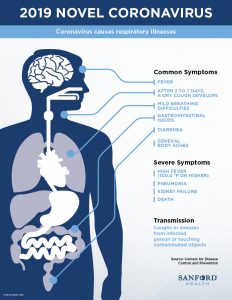
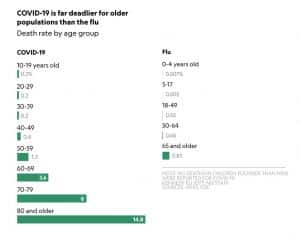

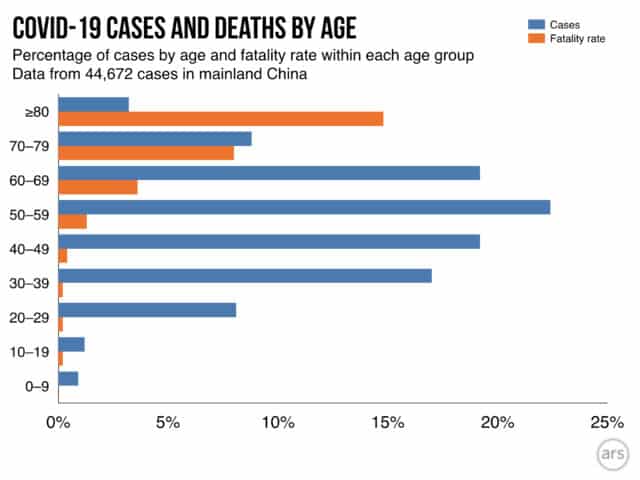
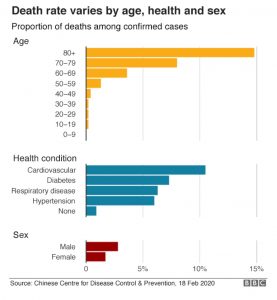
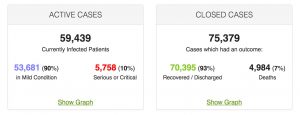
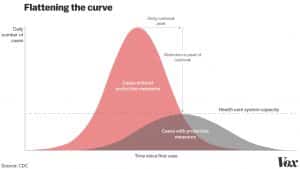

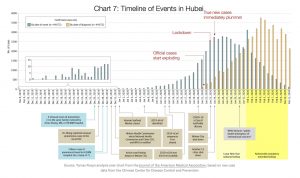
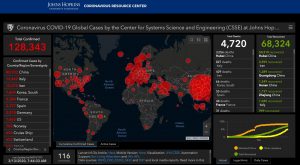
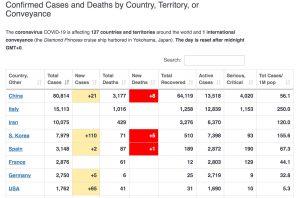
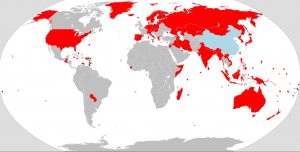
Much needed information. I will share it in the community feed on my channel.
Irresponsible to not cancel…we all need to do our part!
Bad decision no matter how you look at it.
People have choices and if they attend…their choice, decision…selfish and not considering the health and safety of others…sad
Whow. Quite a solid piece of information. Exactly what I was looking for. It puts the picture together along with more and more coverage coming to me through all kinds of channels. Thank you very much for this very valuable contribution.
Thank you Lorna
Completely agree with the assessment you provided here. Have been passing this link along for the last 10 days.
Take good care
Thank you very much for this. I’ve found that several people who run in entheogenic circles dismiss coronavirus altogether (whether as a fear thoughtform, the list goes on). Which feels sad, because to my experience, they seem to be missing a certain kind of care and love that are innate in the traditions their medicines come from.